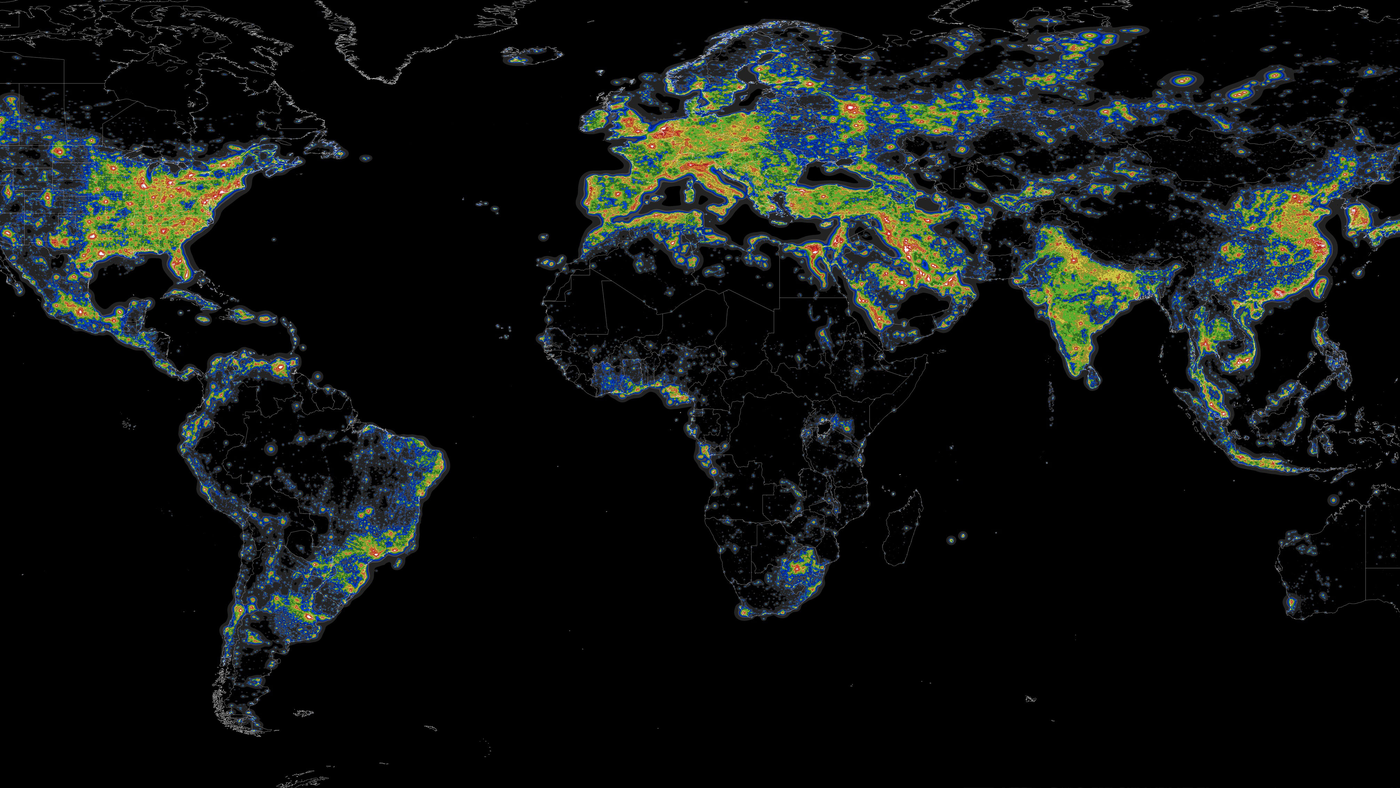NASA Spotlight: Light Pollution Map is an astronomical picture of the day
2 min read
Featured image on the site today’s picture This Wednesday (8) brings a map of the relative amount of light pollution on the planet, coming from artificial lights reflected in particles and aerosols in the atmosphere.
Light pollution creates a glow capable of dazzling stars, causing various places on the planet – including large urban centers – to light up the sky with a diffused glow, resulting in very few visible stars.
In the map below, you can see a representation of light pollution around the world:
This is a kind of map created that shows not how far stars are visible, but the levels of pollution in the atmosphere in different places. Thus, it is possible to compare pollution levels and identify areas where it is most intense.
The image shows that parts of the United States and Europe have an artificial sky brightness of more than ten times that of the natural sky. Areas in orange or red indicate where the central band of the Milky Way can no longer be observed.
What is light pollution?
Light pollution can be described as the inappropriate or excessive use of artificial lights. It comes from a variety of sources such as indoor and outdoor lighting in buildings, advertisements, office lights, street lights, stadiums and more. In addition to making it difficult to observe the stars in the sky, the excess light causes effects on the cycles of plants and animals and also affects the human body.
Today, much of the world’s population lives in areas with light pollution – a study published in 2016 in Science showed that 80% of humans live in areas where the sky is lit up by the glow of artificial lights. Brightness is constant in large cities, and comes from light emitted by sources on Earth, which is then scattered into the atmosphere and returned to the eyes, overshadowing observing stars in the sky.
However, some of this light manages to travel through the atmosphere and escape into space, where it is intercepted by Earth observation satellites. The amount detected by satellites can be used to estimate the amount of light that is emitted or scattered upward from the Earth. The analysis allows estimation of light emissions.
source: APOD

“Entrepreneur. Music enthusiast. Lifelong communicator. General coffee aficionado. Internet scholar.”

:strip_icc()/s04.video.glbimg.com/x720/11792055.jpg)

:strip_icc()/s03.video.glbimg.com/x720/11786998.jpg)



